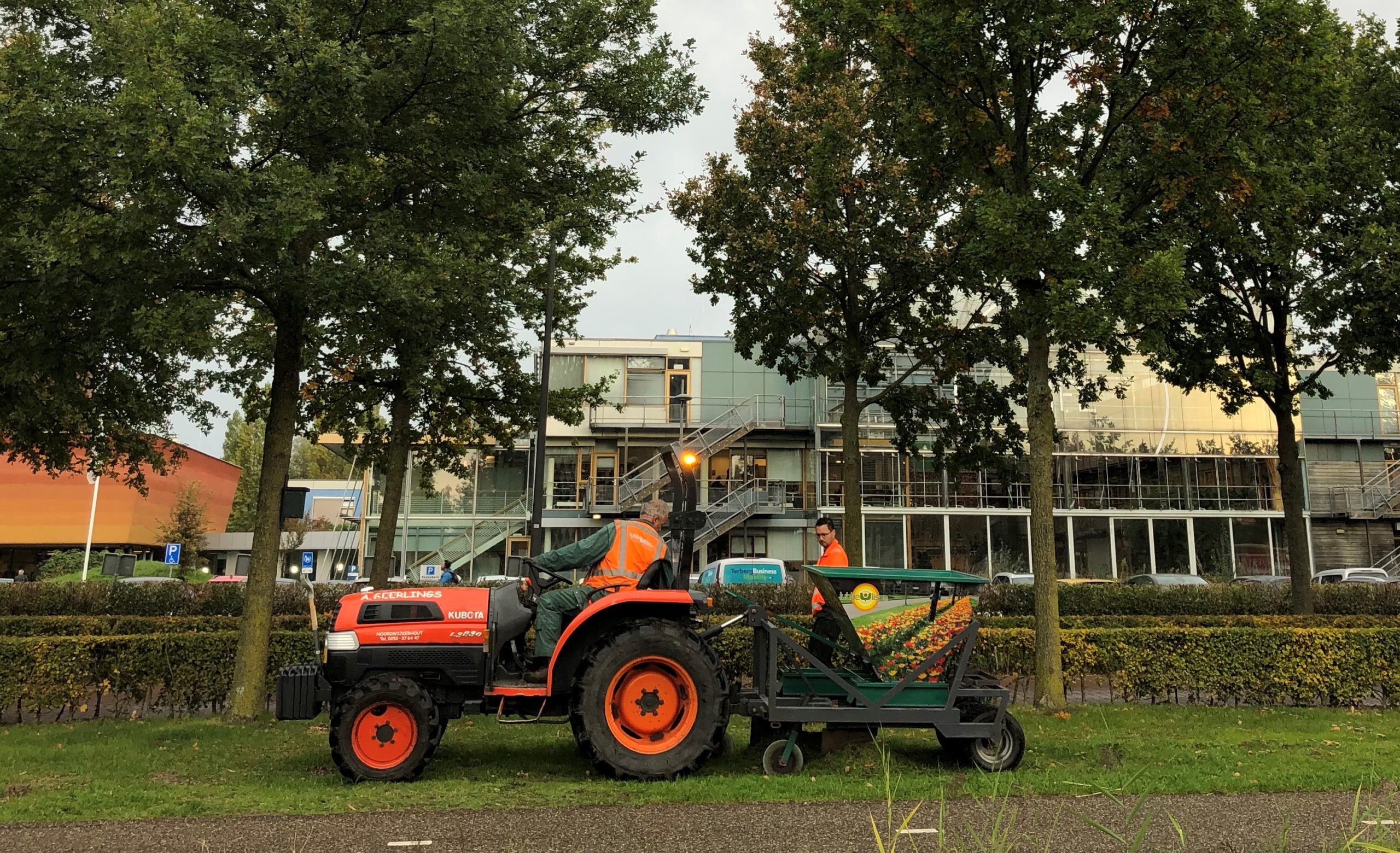Under the watchful eye of ecologist Wieger Wamelink, a bulb-planting machine lifted the grass between the cycling lane and the road along the Droevendaalsesteeg to and including the Bornsesteeg. It planted bulbs underneath the grass. An hour later, everything looked as if nothing had happened.
In the spring, everything is to be completely different. Wamelink decided the campus could use some more colour and biodiversity. Within a week, he crowd-funded sufficient money, with support from, among others, the Real Estate department, the executive board, Plant Sciences Group and groundskeeping, to prepare the grass from the Masholtlaan to and including the Bornsesteeg for a sea of flowers in the spring.
Guerrilla gardening
Wamelink: ‘We use a wild mixture. Bulbs that can naturalise, as they used to do in the forests around ancient Friesian estates. The owners thereof were wealthy and wanted to spruce up the forests by planting bulbs so they would have flowering plants in the spring: botanical tulips, crocuses, celandine and snowdrops. We are doing something similar to make the campus more colourful. There is a need for this initiative, as students have recently taken to guerrilla gardening, where they secretly plant bulbs. I agree wholeheartedly. The strip of grass is just lying around anyway, so I thought: let’s turn it into something beautiful.’
The bulb-planting machine starts its work at around nine. It looks a little like a fertilising machine. A hopper with bulbs is attached to the back of the machine. Underneath is a device with so-called planting feet that lift up the grass and plant bulbs at a depth of 5 centimetres. The grass is then put back in place. At the end of the day, everything looks as if nothing has happened. ‘In the spring, a sea of flowers will appear along the Droevendaalsesteeg’, Wamelink predicts. ‘The snowdrops and the winter aconites will appear first, followed by the celandine, crocuses and, finally, the botanical tulips; it will be a beautiful long period of bloom from the early spring till the end of May.’

 A planting machine plants bulbs beneath the grass along the Droevendaalsesteeg. Photo: Resource.
A planting machine plants bulbs beneath the grass along the Droevendaalsesteeg. Photo: Resource. ![[Seriously?] The Gulf of WUR](https://www.resource-online.nl/app/uploads/2025/02/WEB_DeNeus.png)

